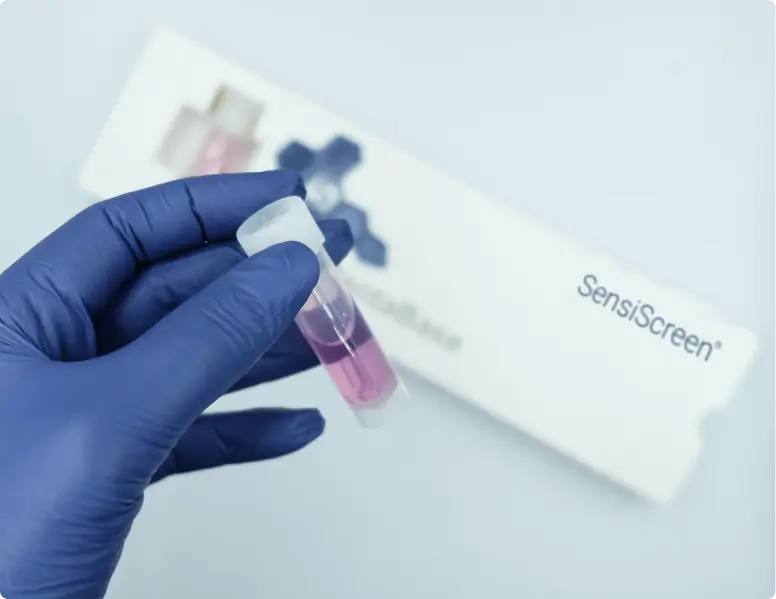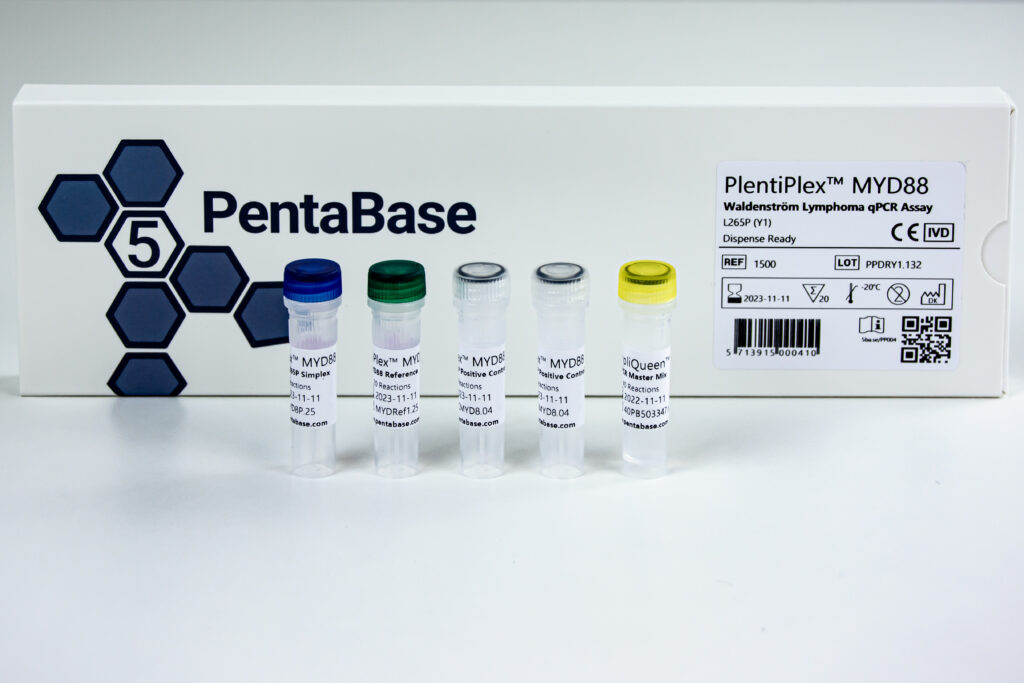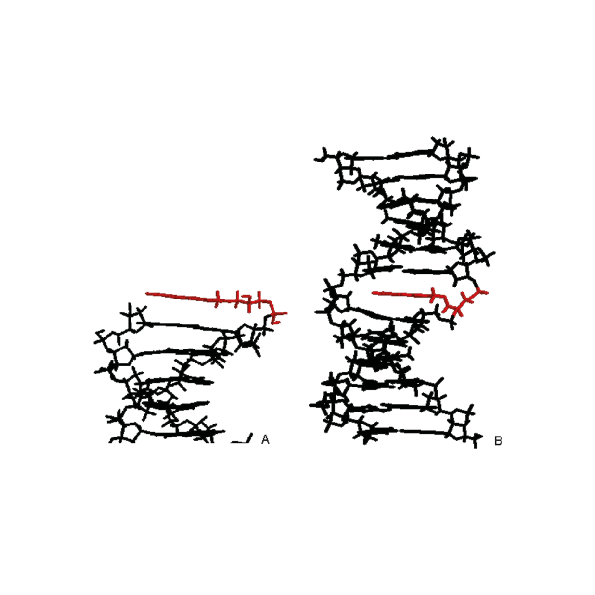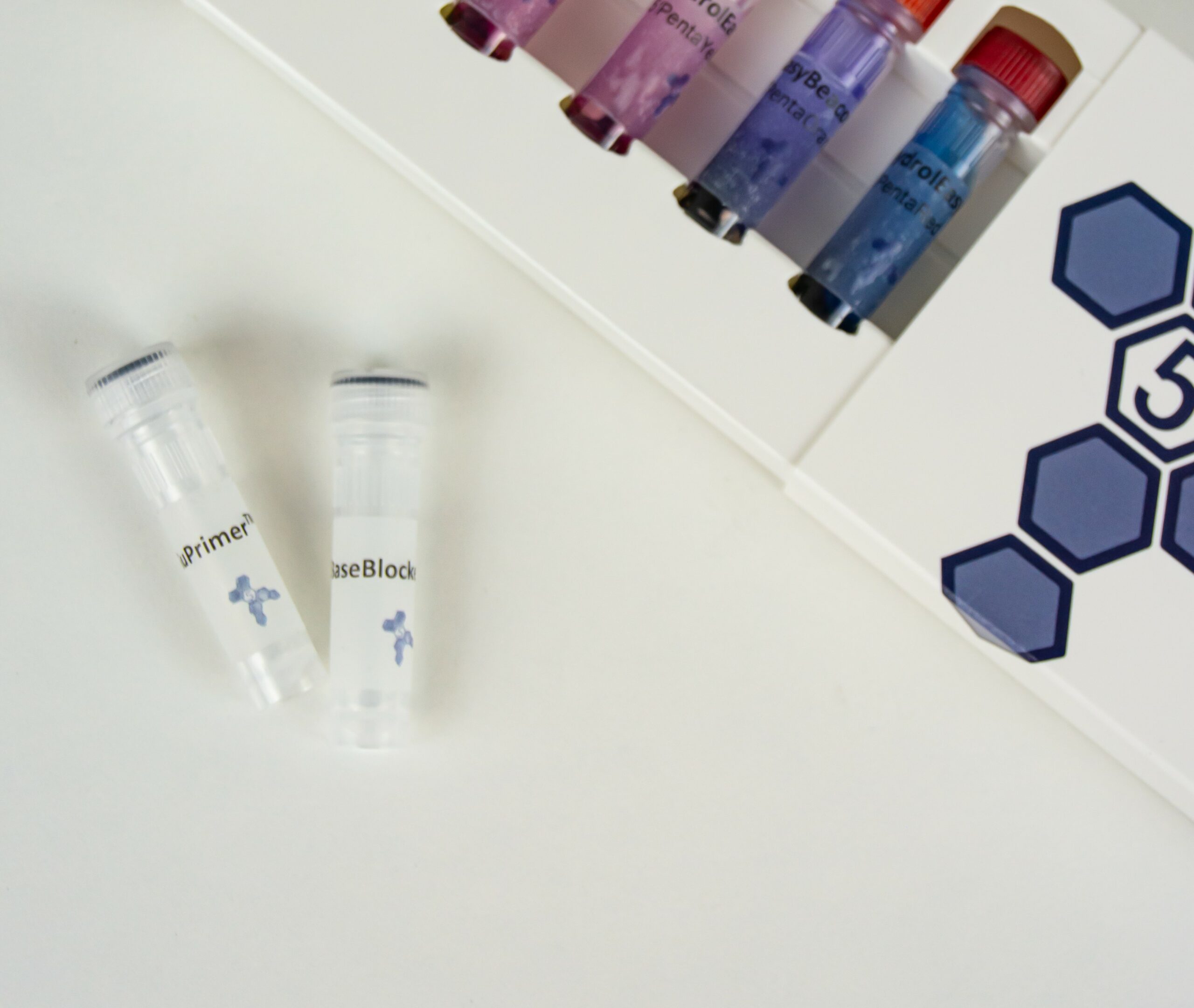
BaseBlockers™
BaseBlockers™ are short INA® oligonucleotides that are highly modified with intercalating pseudo-nucleotides (IPNs). The BaseBlockers™ have extremely high target affinity and specificity which makes them useful for target-specific blocking of PCR amplification. BaseBlocker™ features and advantages include:
- Reduced false positive PCR assay results
- Extremely high target affinity and specifity
- Sequence specific blocking of PCR amplification
- Particularly useful as part of low frequency SNV detection assays
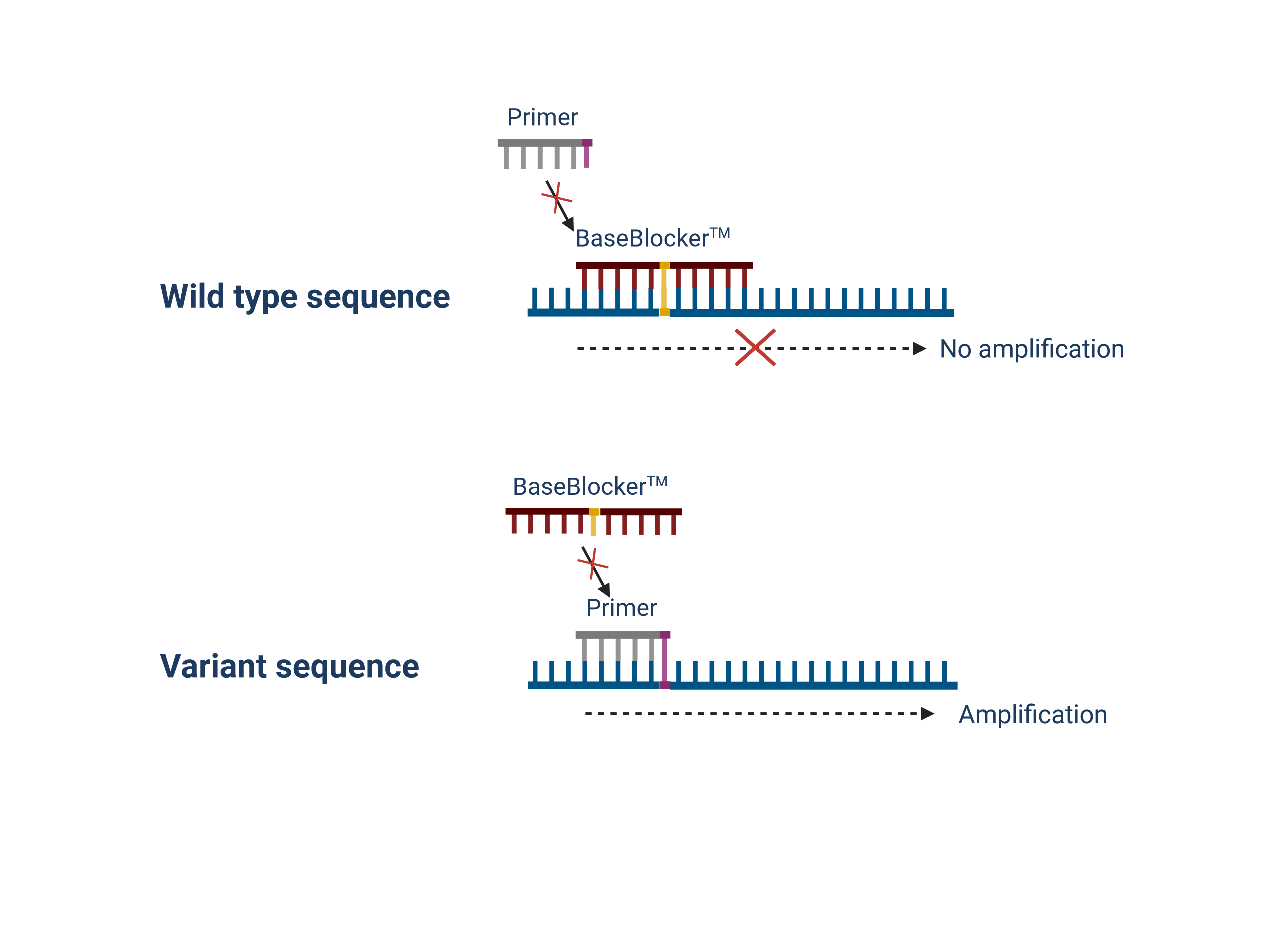
Binary Binding Dynamics
BaseBlockers™are otherwise unmodified INA® oligos containing particularly many IPN molecules that provides BaseBlockers™ with an extremely high target affinity and specificity. BaseBlockers™ are furthermore modified to ensure that they do not work as potential primers.
The resulting target vs. off-target binding dynamics og BaseBlockers™ resemble a binary response even with single nucleotide variation between target and off-target sequences.
Customized BaseBlockers™ can be designed by PentaBase for your specific targets and applications.
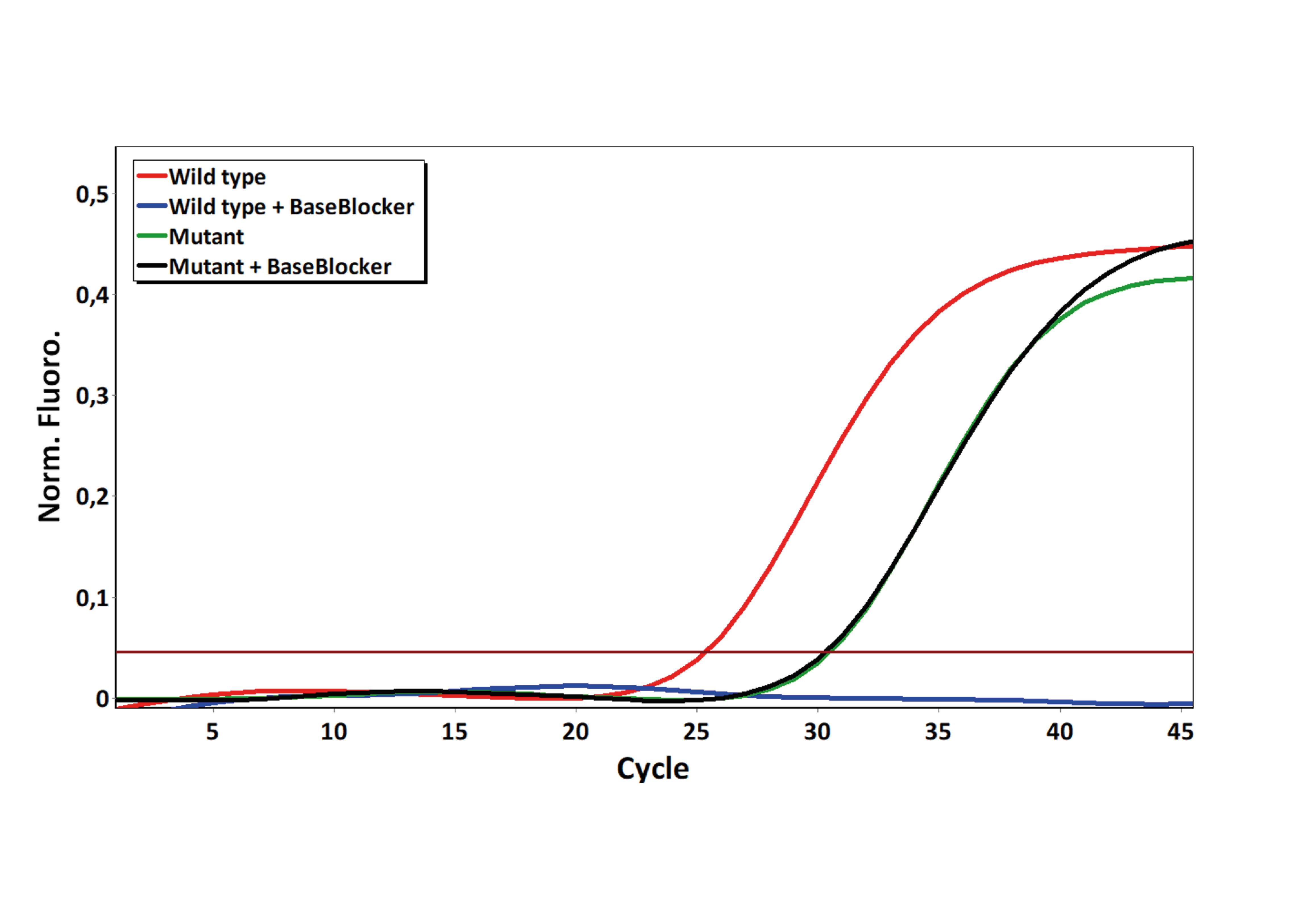
Reduced Off-target Amplification
The extreme sensitivity of BaseBlocksers™ to target sequence variation can be utilised to prevent binding of e.g. allel-specific primers to wild type sequences.
BaseBlockers™ are therefore particularly useful in PCR assays for detection of low frequency mutations where selective amplification can be highly improved by including a BaseBlocker™ that specifically binds and blocks amplification of the wild type sequence.
The addition of a BaseBlocker™ thereby lowers the risk of false positive results without influencing the rate of false negatives.
The graph shows amplification curves of an assay with and without the inclusion of a BaseBlocker™ when using a wild type and a single nucleotide mutated template.
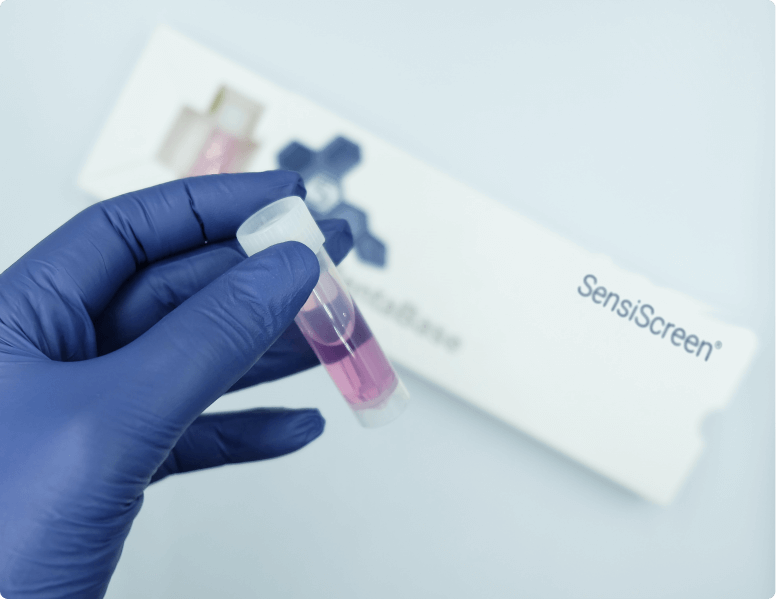
Quality Controlled
Evaluation of BaseBlocker™ performance in melt studies are part of our quality control during production.
Product Details
Reference Numbers:
436, 437, 438
Product Name:
BaseBlocker™ 14-35 mer
Product Description:
BaseBlocker™ design (436), 10 nmol delivered (437), 50 nmol or higher delivered (438)
Yield:
10/50 nmol or higher delivered
Format:
Lyophilized
Pricing:
€500/€140/€280 (436/437/438)
Publications
SensiScreen® KRAS exon 2-sensitive simplex and multiplex real-time PCR-based assays for detection of KRAS exon 2 mutations
Riva et al. – PLoS One – 2017
Occurence of RAS reversion in metastatic colorectal cancer patients treated with bevacizumab
Epistolio et al. – Oncotarget – 2021
A new sensitive and fast assay for the detection of EGFR mutations in liquid biopsies
Jensen et al. – PLoS One – 2021
Detection of BRAF mutations in malignant melanoma and colorectal cancer by SensiScreen® FFPE BRAF qPCR assay
Sørensen et al. – PLoS One – 2023
PlentiPlex™ MYD88 Waldenström lymphoma qPCR assay: A highly sensitive method for detection of MYD88 L265P mutation
Viscovo et al. – Int J Lab Hematol. – 2024
Related files
